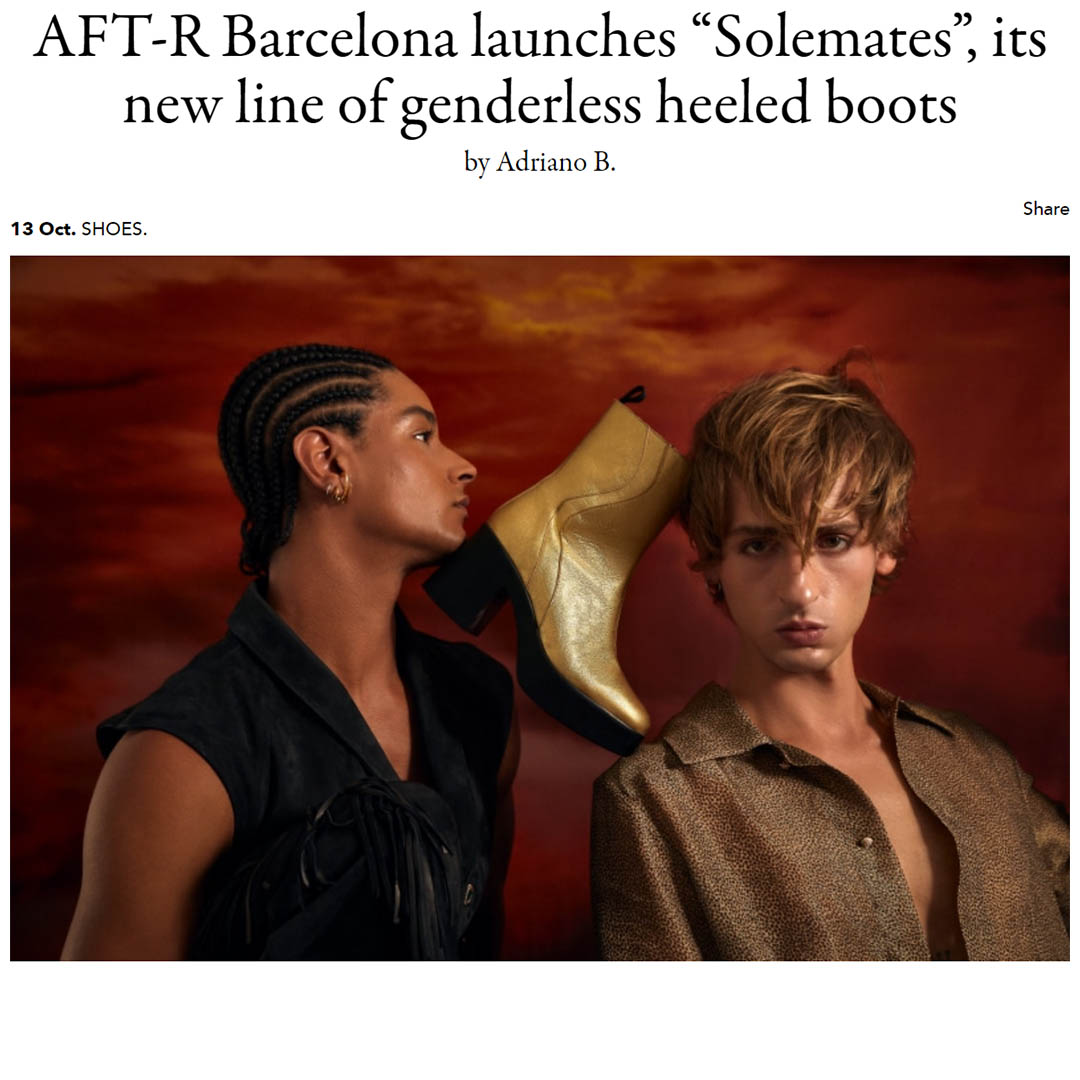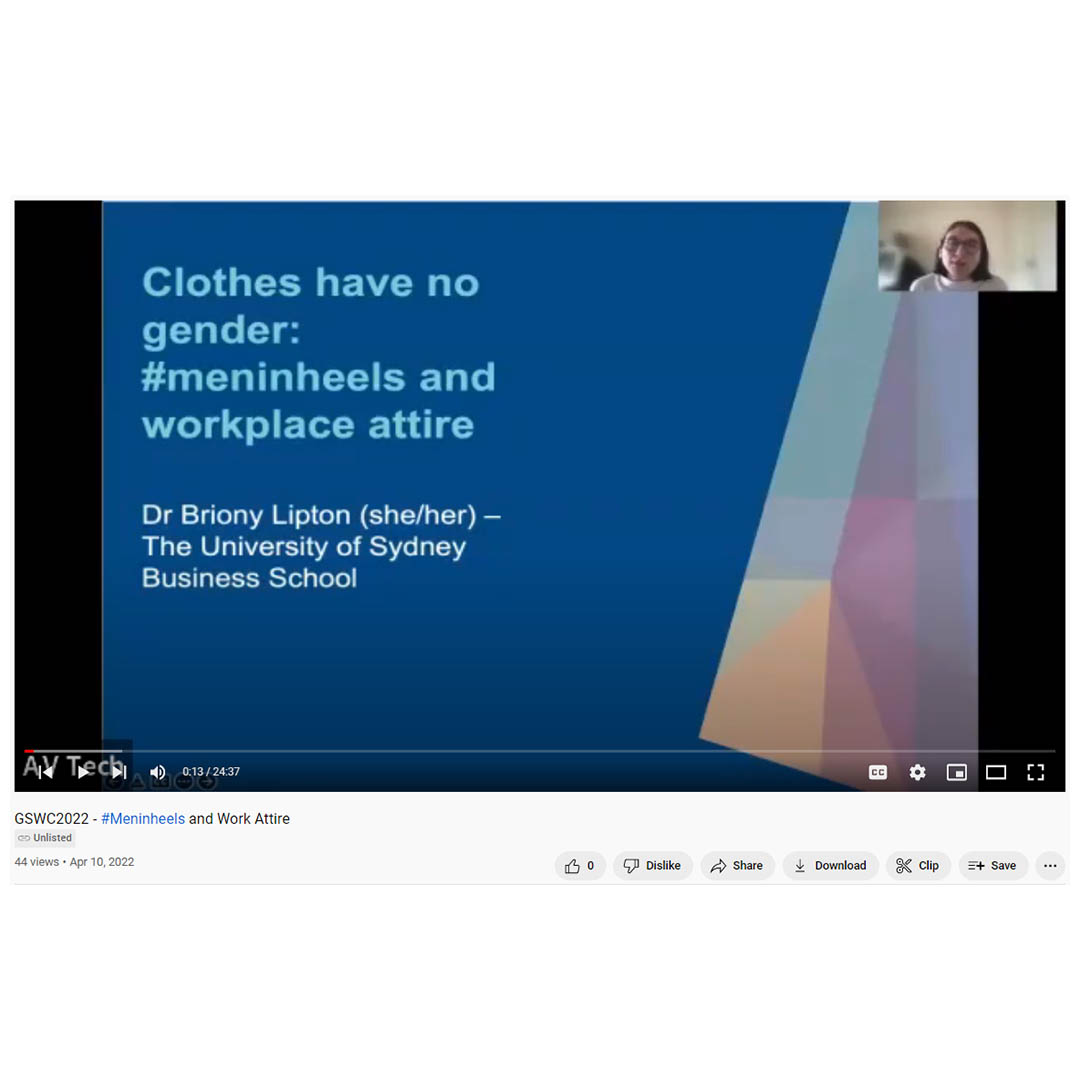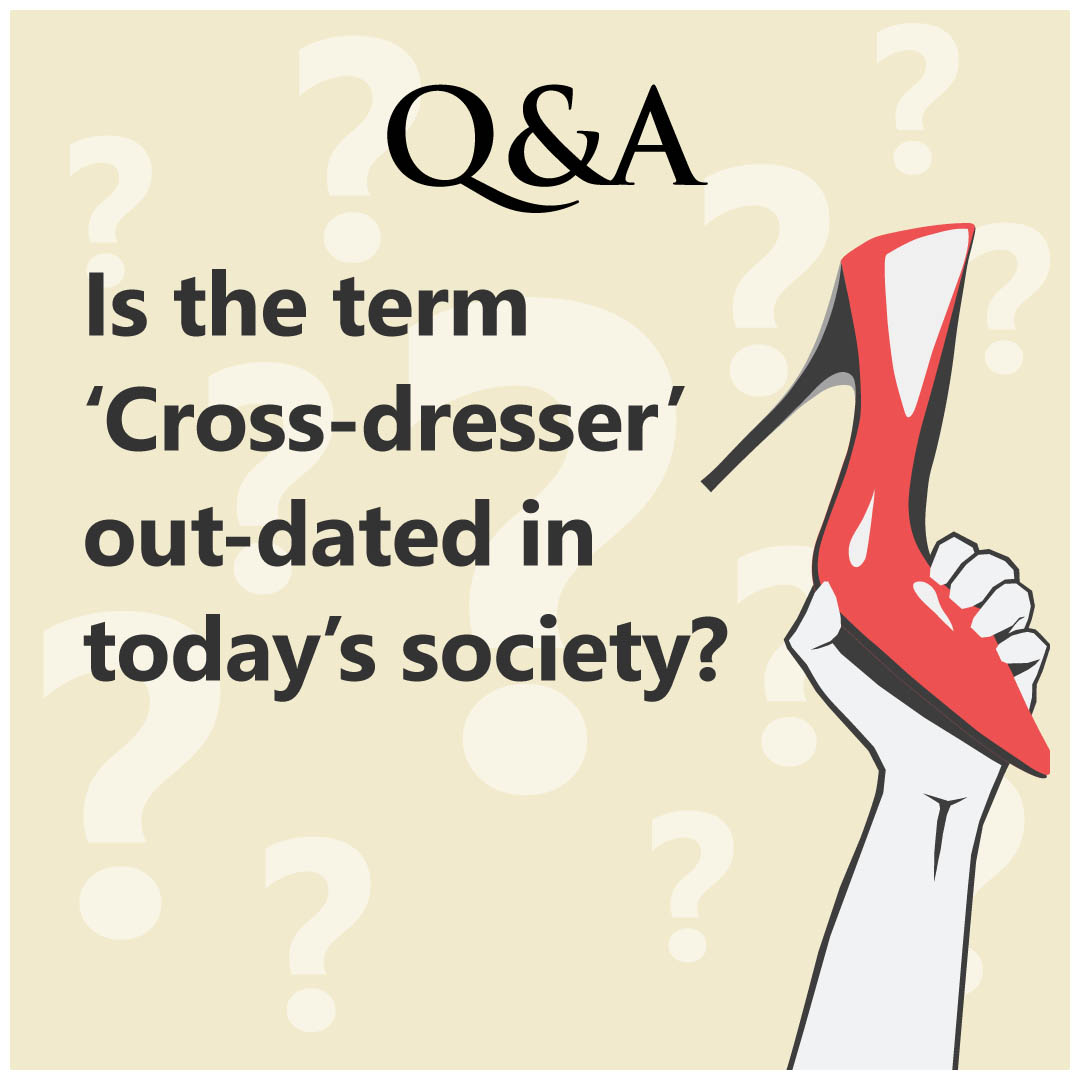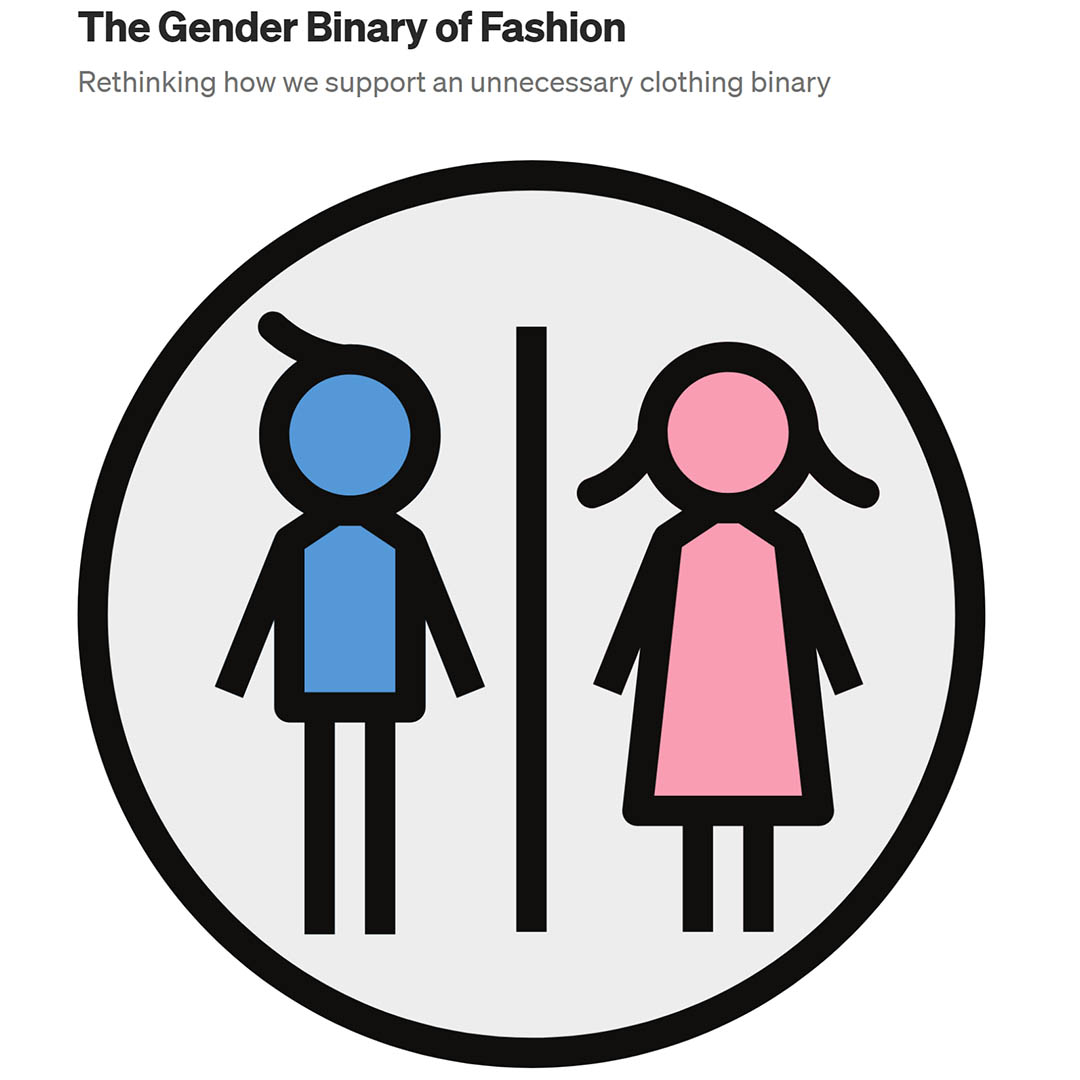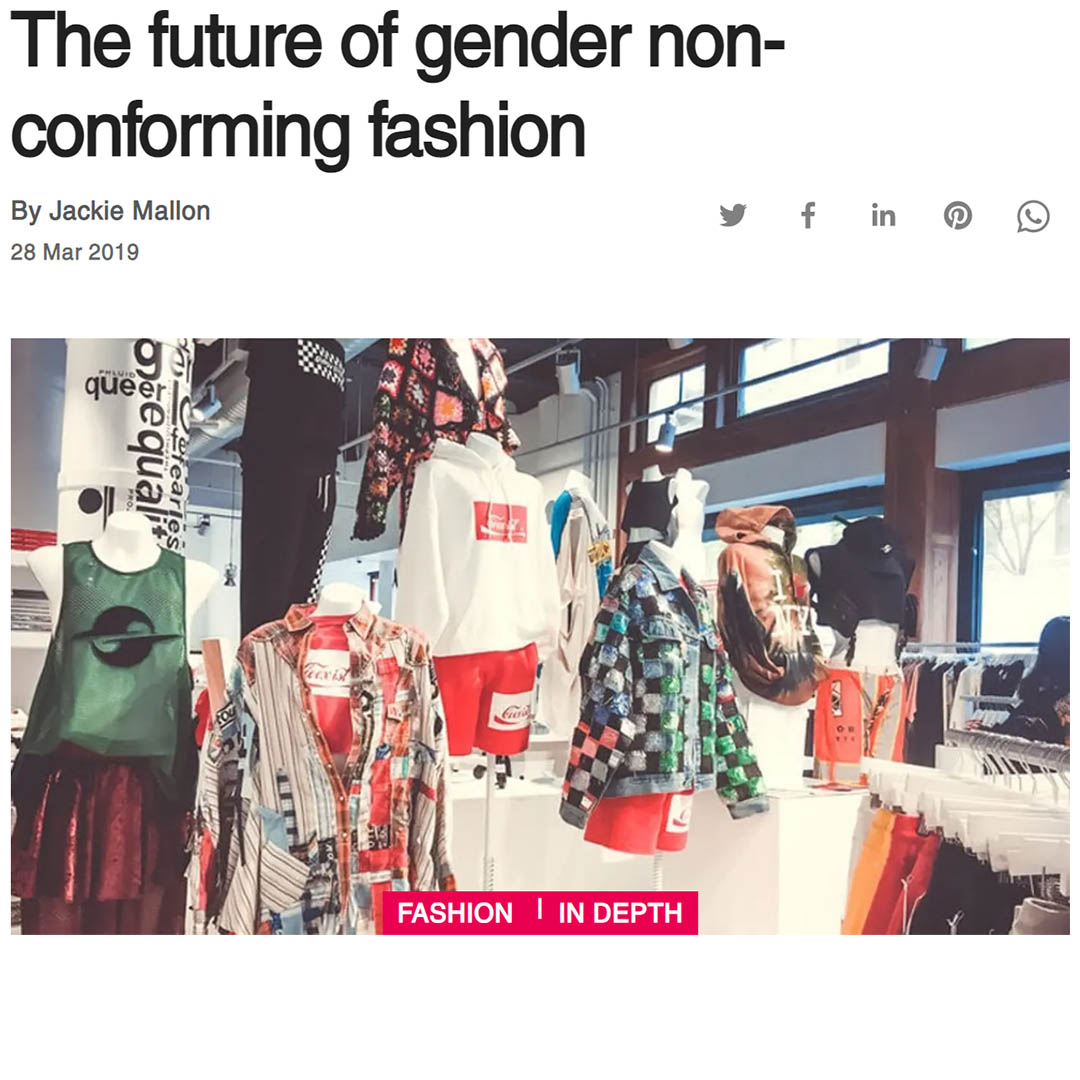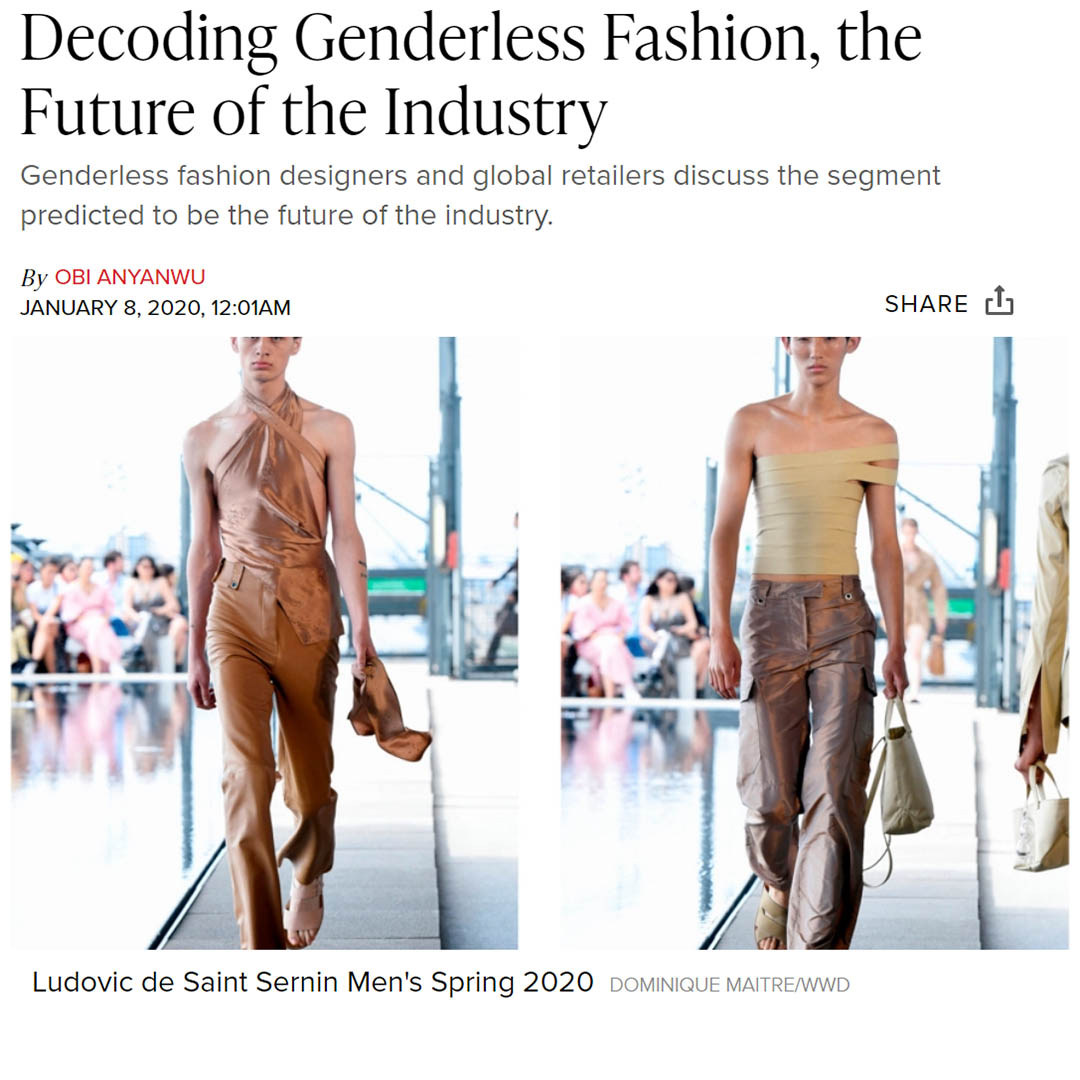Articles tagged with "Gender Free"
It's always great to see brands emerging with open minded attitudes towards clothing and gender. AFT-R Barcelona is a relatively new shoe brand who are now embracing genderless heels. It's a bold move for a relatively young brand, though their styles will certainly appeal to a large audience regardless of gender. With sizes from EU36 to EU44, there's clearly still some caution about the market for men with the absence of sizes above EU44, though it's still a welcome start and keeps the conversation going about heels for men.
From the article:
"AFT-R BARCELONA, a genderless shoe brand created in Barcelona in 2019 by Eric Turró and Alejandra Conesa, has always been known for advocating inclusion and diversity through footwear. Coinciding with its third anniversary, the project expands its family of products by adding the genderless high-heeled boot to its offer."
Original URL: https://fuckingyoung.es/aft-r-barcelona-launches-solemates-its-new-line-of-genderless-heeled-boots/
Posted: 12 January 2023
While many curious men explore their gender identity at home, often with items of clothing they've acquired by mail order services, they may consider showing up at their workplace in those items as an unattainable dream. There is however some serious research being done in this area by many people to determine the sociological effect of workplace attire and how people who are gender nonconforming, non-binary, genderqueer and so forth are challenging the norm in the workplace.
From the Gender Sexuality at Work Conference 2022, Dr Briony Lipton gives this compelling presentation of her work on "Men In Heels And Workplace Attire" which forms part of a larger project "Invisibilities Of Gendered Inequality In The Age Of Remote And Hybrid Work". Her research on gender equality and changes in professional attire is particularly interesting as it addresses a fundamental shift in our pandemic and post-pandemic work lives where many of us now regularly work from home, or have a hybrid home/office arrangement with who we work for.
She explores "Queer Heterosexuality" and whether there are ways in which straight men can disrupt the dominant paradigm of the straight-masculine and whether this can help to communicate, challenge and influence organisations and individuals perceptions of gender and sexual identities and their perceptions of equality and inclusion in the workplace.
With notable mentions of @MarkBryan911, @The_Heads_Count, @AlokVMenon, @TheeBillyPorter, @GentlemanHeels and @Mens.Heels.Revolution there are a number of other Instagram accounts featured in the video which we'll leave you to discover for yourselves.
Original URL: https://www.youtube.com/watch?v=_UCe441EoYI&list=PLhOObpoQndRlSrCjtoprhSRUWCa_qqZ8h&t=4s
Posted: 15 October 2022
Is the term ‘Cross-dresser’ out-dated in today’s society?
Before we can answer that question, some definitions may be useful.
Cross-dressing: is the act of wearing items of clothing not commonly associated with one's sex. Cross-dressing has been used for purposes of disguise, comfort, comedy, and self-expression in modern times and throughout history.
Almost every human society throughout history has had expected norms for each gender relating to style, colour, or type of clothing they are expected to wear, and likewise most societies have had a set of guidelines, views or even laws defining what type of clothing is appropriate for each gender.
The term "cross-dressing" refers to an action or a behaviour, without attributing or implying any specific causes or motives for that behaviour. Cross-dressing is not synonymous with being transgender.
Another term for cross-dressing is Transvestitism. Someone who engages in Cross-dressing/Transvestitism is called a Cross-dresser(CD)/Transvestite(TV), although the term Transvestite is now commonly considered outdated and disrespectful. The term Transvestite (often shortened to the slang term "Tranny") was historically used as a slur against people who wore clothes of the opposite sex. Cross-dresser is now a much more accepted term. Cross-dresser was coined by the transgender community.
MtF and FtM Cross-dresser: A man who dresses in women's clothing is a male to female (MtF) cross-dresser. a woman who dressing in men's clothing is a female to male (FtM) cross-dresser. For women, the term is seldom used and the wearing of trousers/pants/men's shirts is often discounted as cross-dressing. This is because in our current society, male clothing is often considered gender-neutral. Therefore when someone uses the term "cross-dresser", the focus shifts mainly towards a MtF cross-dresser.
With those definitions made, two additional points are important to recognise:
a). Cross-dressing as it relates to Transgender: Wearing clothes intended for the opposite sex does not mean that the person identifies as the opposite sex. It is different from being Transgender or Transsexual. When transgender people dress according to their gender identity it is not necessarily the same as cross-dressing.
It is important to know that a cross-dresser does not necessarily have body or gender dysphoria (gender dysphoria means feeling uncomfortable with their body and gender they were born with), they are perfectly happy with their gender assigned at birth and have no desire to change their sex, but simply enjoy being able to cross-dress from time to time. However, Transgender describes people who feel that their gender identity is different from their biological sex.
Most transgender people do not appreciate being called cross-dressers, and for good reason. As they are wearing clothes of their own gender identity they consider themselves, and should be considered by others as the gender they are dressing in. A Transgender woman wearing women's clothes is not a cross-dresser, nor is she a drag queen. She is just a woman. Similarly, a Transgender man, wearing men's clothes is not a cross-dresser, nor is he a drag king. He is just a man.
b). Cross-dressing as it relates to Drag: A cross-dresser should not be confused with drag queens/kings. Drag is a special form of performance art based on the act of cross-dressing. Drag queens are usually male performance artists who dress in female character. Drag Kings are mostly female performance artists who dress in male character.
Now, to get down to answering the question...
As gender refers to the socially constructed roles, behaviours, expressions and identities of girls, women, boys, men, and gender diverse people we can deconstruct that concept. While the term Cross-dresser works well for some people, as it has for years, for many others they do not feel that it works well for them. For non-binary or agender people (who don't identify with the gender binary of male & female) who want to wear certain clothes as part of their gender expression, feel that the term is obstructive and often offensive towards them. With the realisation that clothes have no gender, a skirt or a pair of trousers are essentially just coloured and textured fabric cut and sewn into a garment. The clothes know nothing of gender other than that assigned to them by their creator. The same, of course applies to shoes - high heels are not women's shoes... they are just high heels.
A growing number of people believe that today's socially constructed gender stereotypes don't serve us well in enabling fully inclusive gender expression that recognises our diversity. With the central fact that gender is a social construct, gender labelling of clothing is also a therefore also social construct and can equally be challenged and deconstructed. Gender labelling of clothing perpetuates the construct, but in more recent years this is slowly changing with manufacturers and retailers removing, or neutralising gender labelling on clothes and on signage in stores.
Manufacturers and retailers, now too numerous to mention, are also making items of clothing more traditionally intended for a single sex for both sexes, while recognising that the key differentiator is not actually our biological sex, but our body shape. Does the term cross-dresser still stand up when the clothes have no gender labels? Maybe not.
All clothing, of whatever shape, colour, texture or style has been worn by both sexes as normal daily wear at some point in history, so why do we have gendered clothing now? Visual communication is one of the many reasons we dress the way we do. Our gender identity is expressed visually through what we wear, as can be our social status or rank within an organisation. Sometimes our visual appearance, what we wear, make-up, hairstyle, skin colour, whether rightly or wrongly, can trigger others around us through our learned and often habituated social conditioning to make a judgement on how they should interact with us. Aside from organisational ranking, we should not treat people differently because of their appearance. Everyone is born equal and should be treated as such. Does what they wear really matter more than their actions and achievements as a person?
In conclusion, the term Cross-dresser is fine for a socially constructed world in which there is a gender binary, but it does not work well in a non-binary world where gender is expressed on a spectrum and where many believe that clothing has no gender to start with. When it comes to the use of the term today, if the logic used to describe a man in "women's" clothes as a crossdresser does not hold when applied to a woman wearing "men's" clothes - it's not logic, it's sexism.
When clothing has no gender there are no lines to "cross", hence no cross-dressing and why we therefore believe that the term cross-dresser is out-dated and should decline in use.
Posted: 27 July 2022
This article from Medium suggests that maybe it's time to enable people to not feel limited in their fashion expression to the clothing sections that match the gender they were assigned at birth. It's a thought provoking read and certainly offers a step in the right direction.
Original URL: https://medium.com/gender-from-the-trenches/the-gender-binary-of-fashion-1a9d174e4a84
Posted: 10 May 2022
This article from Fashion United reports on the results of a panel discussion organised by the Hetrick-Martin Institute and how the fashion industry needs to adapt to accommodate a rapidly growing demand by the gender non-conforming demographic. How can the shopping experience be enhanced and growth managed in a sustainable way? The article explores the options.
Original URL: https://fashionunited.uk/news/fashion/the-future-of-gender-non-conforming-fashion/2019032742414
Posted: 4 December 2021
The fashion industry carefully considers itself in light of the progressive movement in gender identity & gender expression as it relates to fashion. Unisex and gender free, with inclusion & diversity on the agenda are seeing a rise in the number of genderless brands and with 56 percent of generation-Z consumers shopping "outside their assigned gendered area", there is a call to respond accordingly. The article illustrates how many retailers are responding to change and adapting to increase in demand for non-binary fashion items.
Original URL: https://wwd.com/fashion-news/fashion-features/genderless-fashion-future-of-industry-1203381685/
Posted: 20 March 2021
